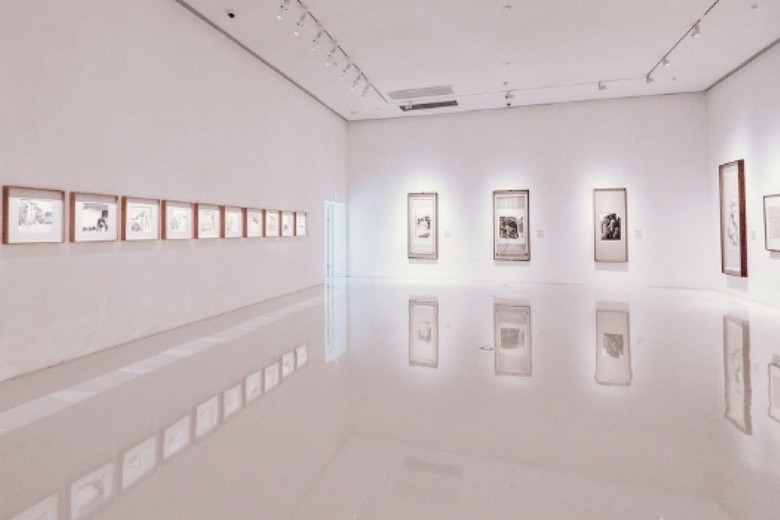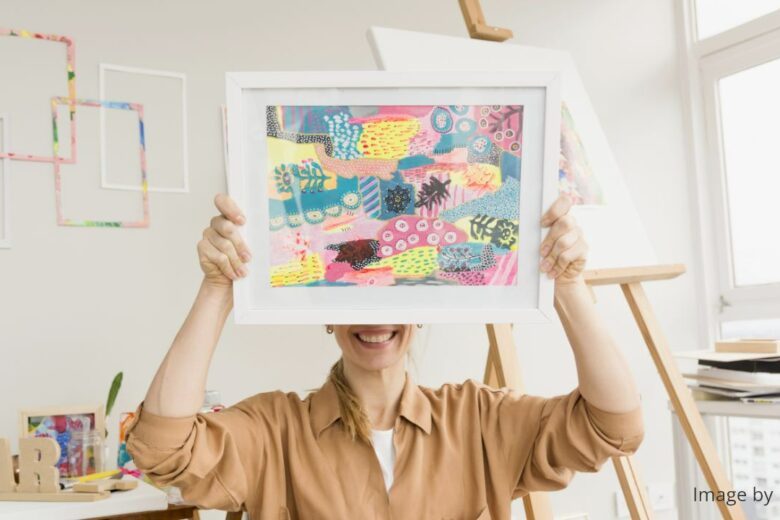Art galleries are a great way to get your work seen by more people, and they can also help you build your network of art-world contacts.
Whether you’re a seasoned artist or just starting out, the process of having a representation in an art gallery can be daunting.
In this guide, I’ll walk you through everything you need to know about getting your art into a gallery.
How can I get my art into galleries?
- Understand the process of getting art into a gallery
- What galleries look for in art?
- Create a solid online presence
- Submit your art to galleries
- Follow up with galleries after submission
- Prepare for rejection
- What happens after your art is accepted?
- Celebrate success.
1. Understand the process of getting art into a gallery
If you wish to join and achieve success with galleries, you need to understand the process of getting your art into a gallery. Let’s break it down and discuss them in detail.
Research galleries that are a good fit for your art
Here a some recommendations to get you started. When researching galleries, it’s important to set a goal for exhibiting your work. Are you looking for a gallery that will help you build your portfolio, or are you looking for one that will help you sell your work, or both? You’ll know more specifically what kind of galleries to look for if you have an objective in mind.
Find galleries that represent the style of art or paintings that you create, and that are located in an area where your work would be appreciated.
You can find information on the gallery’s social media pages and website to learn more about the their mission and the artists they represent. If there are online reviews of galleries, consider checking them out.
When you’ve found a few galleries that you’re interested in, try contacting them and ask if they have open calls for artist submission. Most galleries will have a submission form on their website. If you’re interested to make a submission, make sure you read the submission guidelines and all of the terms and conditions carefully. Take note of the gallery’s submission criteria, fees and commissions.
Look up the art councils in your area
Your local municipal arts council is another excellent place to look for open calls for artist submissions. Most provincial, state and federal arts councils provide an online network for finding opportunities to get your art exhibited.
Many smaller towns and cities have their own municipal arts council, which is a branch of local government that is specifically responsible for the promotion and support of the arts. These councils often have websites where they list open calls for artist submissions, as well as other resources for artists such as exhibition opportunities, funding programs, and workshops.
Do a search for “art galleries + your city/town” to find galleries in your area.
Additionally, some larger municipalities may have their own art galleries. Find out if your municipality has one that accepts submissions from artists and, if so, what the submission procedure is.
Attend art exhibitions and gallery openings

Attending art exhibitions and gallery openings are an opportunistic way to expose your work to art gallery owners and curators looking for new artists.
At these events, take the time to network with new people and other artists and show your support for their work. If you make an effort to build relationships with them, they will want to help you by recommending art galleries to you.
Observe the artwork you encounter as well. The pieces chosen by certain galleries and curators may reflect a personal taste or preference. You will be able to tell from the observation whether the exhibition or gallery is a good fit for your work.
2. What galleries look for in art?
Galleries are always on the lookout for new and upcoming artists to showcase in their establishments. There are two key elements that galleries take into consideration when choosing pieces for their walls.
Sense of originality is one of the most important qualities that galleries look for. They want to be sure that the art they showcase is not something they’ve seen before. As an artist, it’s important to find a unique perspective and execute your work in a unique way.
Galleries will also look for story-driven artwork. They want to be able to convey a narrative through the works they exhibit, and they want their audience to leave with a fresh outlook on the art world. It’s better to ensure that your work tells a story.
You’ll have a better chance of being represented by a gallery if you have these elements in mind as you create your artwork.
3. Create a solid online presence
Make sure to keep your online portfolio and/or social media profiles up-to-date with your latest artwork.
You can also use your website or blog to write about your art, your creative process, and your inspiration. It’s worth investing the time and effort needed to create a solid online presence. This will help your audience, galleries and curators learn more about you and your art endeavours.
4. Submit your art to galleries
You’ve laid out the terrain – if you’ve done your homework of researching the right galleries, understanding what they are looking for, their submission guidelines and kept your online presence updated. Now, it’s time to submit your work by sending them a proposal.
In your proposal, include a copy of your artwork, a biography, and a statement about your work. You should also include information about your prices and any other terms you are willing to negotiate. Keep in mind that it can take a while to get into a gallery, so be patient and keep submitting your work to more galleries while you wait.
If the gallery is interested in your work, they will contact you to set up a meeting. At this meeting, you may need to pitch and show your art in person with the gallery staff. Prepare your pitch and practice it thoroughly before the meeting – speak confidently about your art, your inspiration, and themes.
When you are able to articulate your work to the gallery in a compelling way, it will be easier for them to appreciate your art. And if your pitch strikes a chord with them, they’d offer to represent you.
5. Follow up with galleries after submission
What’s the next step if you have submitted your work to a gallery and awaiting response? There are two things you can do.
As previously suggested, be patient. It may take some time for the galleries to review all of the submissions because they usually receive a large number of them.
If you haven’t heard anything after a reasonable amount of time, proceed to contact the gallery. Most of the time, all it takes to get a response is a courteous email or a phone call.
6. Prepare for rejection
Don’t be discouraged if you don’t hear back or the gallery chooses not to represent you. This is normal, and it doesn’t mean that you’re not a good candidate.
It’s important to remain optimistic. Continue to submit to other galleries. The more submission made, the likelihood of being accepted by art galleries increases. So don’t give up and head to step 8!
7. What happens after you art is accepted?
Be sure to express your gratitude. After all the hard work, you are finally being represented by a gallery and as you know, your art pieces will be displayed at their spaces.
After you got accepted, you may be asked to give a talk about your art or participate in an art event. You may also be asked to do an interview for the gallery’s blog or the media. Whatever the case may be, you will be required to show up to promote your art. So be ready for that!
8. Celebrate success.

Now that you’ve reached your goal, and that includes all of your effort made from the above mentioned step 1 to 5, it’s time to celebrate!
Give yourself some credit by taking some time to reflect on your hard work, what you’ve accomplished so far and how you overcame those obstacles. Learn to appreciate the work that you’ve done. This will give you the confidence and motivation needed to continue achieving your next goals moving forward.
So go ahead and enjoy your success all big and small! Treat yourself to something special, and celebrate your victory. Remember to enjoy it, and learn from it too.
My thoughts
In my opinion, I don’t think the process of getting into galleries is difficult at all. If you put in the effort, stay true to your vision and strive to be the best artist that you can be, make no mistake – you can never fail.
All the best and thanks for reading!
P.S: If someone approaches you on social media claiming to be a gallery representative and offering to represent you, be sure to do your due diligence to avoid getting scammed. Most importantly, avoid the shortcuts!







It’s interesting to know that having an online presence can also help a lot when planning to get one’s pieces into an art gallery. My partner and I would like to visit an art gallery soon because I recently moved to a new home. Decorating the place with paintings would surely be a good way to go with sprucing up the place.
Yes indeed Alice : )
“I don’t think the process of getting into galleries is difficult at all”
I have to ask – have you ever actually done it? Or is this blog merely written from Googling and putting together the information you found? Because if there is one thing is not, it’s easy! The fine art world (where we get into quadruple digits for a single piece) is fiendishly competitive, and highly pretentious – that’s why there’s so much garbage hanging in galleries today. As long as you can walk the walk, talk the talk, slap a fine arts degree on your CV and know how to make up a nonsense story about your splodge of paint on canvas, you’re good to go. But easy? No no no.
Sorry if my opinion came up as being overly optimistic to you. I’ve actually met a few young refugee artists who have never got their artwork featured in galleries…to finally getting their breakthrough. It may be challenging for you, but not impossible.